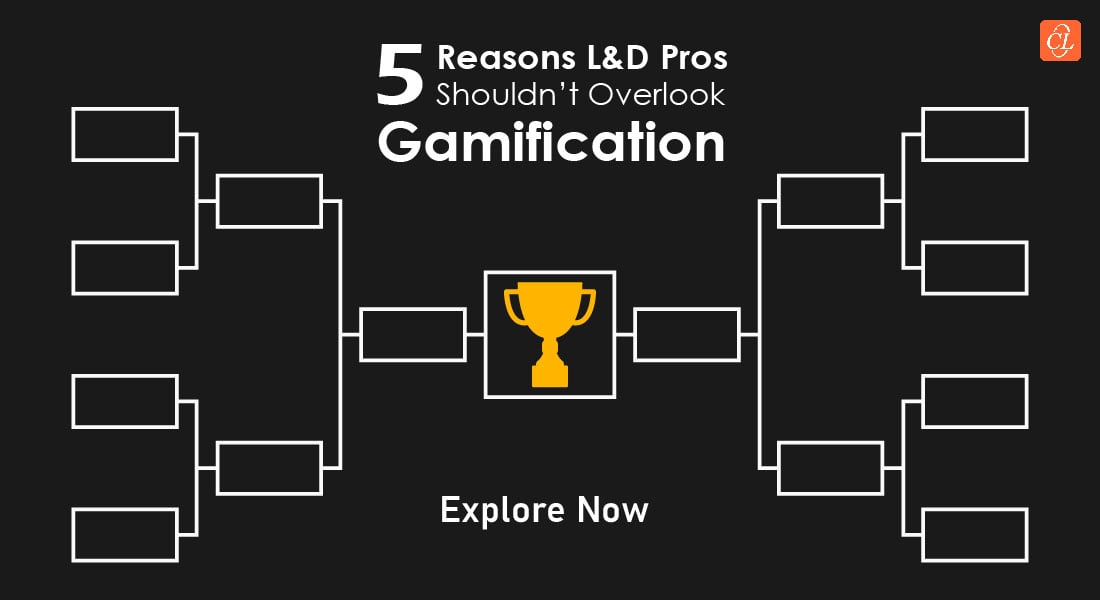5 Reasons Why L&D Pros Shouldn’t Overlook Gamifying Their Training Sessions

As an L&D professional, it’s extremely challenging to continue with traditional training methods because they can often be dull and uninspiring, leading to disengaged participants and lackluster results. Gamifying your training sessions can be a revolutionary approach therefore, embracing gamification is the key to unlocking the full potential of your training programs and achieving measurable success. This blog will help you understand a few reasons why gamifying training sessions is something that should not be overlooked by L&D pros. If you are interested to know more about gamification, you can register for our upcoming virtual event LearnFlux and gain research-backed insights about the latest trends.
→ Sign Up for LearnFlux Now!
5 Reasons Why L&D Pros Shouldn’t Overlook Gamifying Their Training Sessions
As a learning and development(L&D) professional, there are several ways to gamify corporate training sessions, which can make the training more engaging, fun, and effective. Therefore, organizations should try not to overlook gamification, instead, they can try to incorporate it in various creative and innovative ways. Here are some of the most effective ways to gamify corporate training sessions.
1. Incorporate a Point System
You can introduce a point system where participants earn points for completing activities, answering questions correctly, or achieving specific goals during the training. This can make the training more competitive and motivating, encouraging participants to try their best. For example, you can introduce a point system where participants earn points for successfully closing deals, achieving sales targets, or demonstrating excellent customer service skills. At the end of the training program, the participant with the highest points is declared the winner and rewarded with a prize.
2. Introduce Leaderboards
Create a leaderboard where participants can see how they rank against their colleagues based on their scores, points, or achievements. This can create healthy competition among participants, encouraging them to strive for better performance. Suppose you are conducting a compliance training program for your organization. You can create a leaderboard that shows the percentage of completion for each participant, and how they rank against their colleagues. Participants can see their progress in real-time and strive to improve their ranking by completing the training program quickly and accurately. The same leaderboards can be set up for motivating employees to achieve sales targets or lead conversions faster.
3. Integrate Storytelling
Incorporate storytelling into the training program to make it more engaging and memorable. Use narratives, scenarios, and characters to create a relatable and immersive learning experience. For example, you can create a storyline where participants take on the role of a fictional leader who faces different challenges and obstacles. Participants must use their leadership skills and knowledge to overcome these challenges and progress through the storyline. This can make the training program more engaging and exciting.
4. Design Interactive Games
Use interactive games that simulate real-world situations to reinforce learning objectives and encourage problem-solving and critical thinking. For example, you can use interactive games that simulate cyber-attacks and require participants to identify and respond to these attacks. Participants can earn points for successfully detecting and preventing the attacks, and the game can be designed to progressively increase in difficulty to challenge participants. Sign up for the upcoming LearnFlux and learn more about designing games for eLearning and corporate training.
5. Provide Badges and Certificates
Introducing badges and certificates for completing specific training modules or achieving certain milestones can provide participants with a sense of accomplishment and motivation to continue learning. Suppose you are conducting a professional development training program for your organization. You can gamify your training by providing badges and certificates for completing specific modules, achieving a certain score on assessments, or participating in group activities. Participants can display these badges and certificates on their online profiles or social media accounts, showcasing their accomplishments and incentivizing others to join in the training.
Wrapping Up!
Overall, gamification can make corporate training more effective and enjoyable for participants. By incorporating gamification elements such as point systems, leaderboards, storytelling, and interactive games, L&D professionals can create engaging and memorable training programs that deliver results. To get started, you can register for the upcoming LearnFlux event from 21st-23rd March for just $97. So, why wait further? Sign up for the virtual boot camp now to embrace gamification in your next training program and experience the transformational impact it can have on your organization.




![8 Ways to Gamify Your Corporate Training [Infographic]](https://blog.commlabindia.com/hubfs/blogs/gamify-corporate-training-ways-infographic.jpg)
